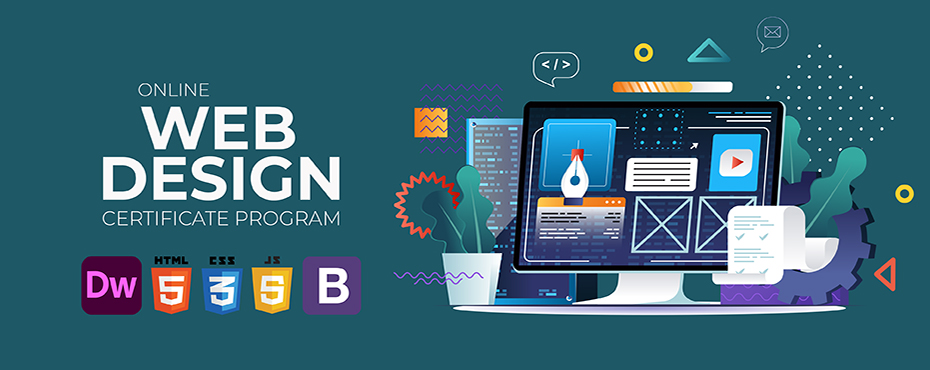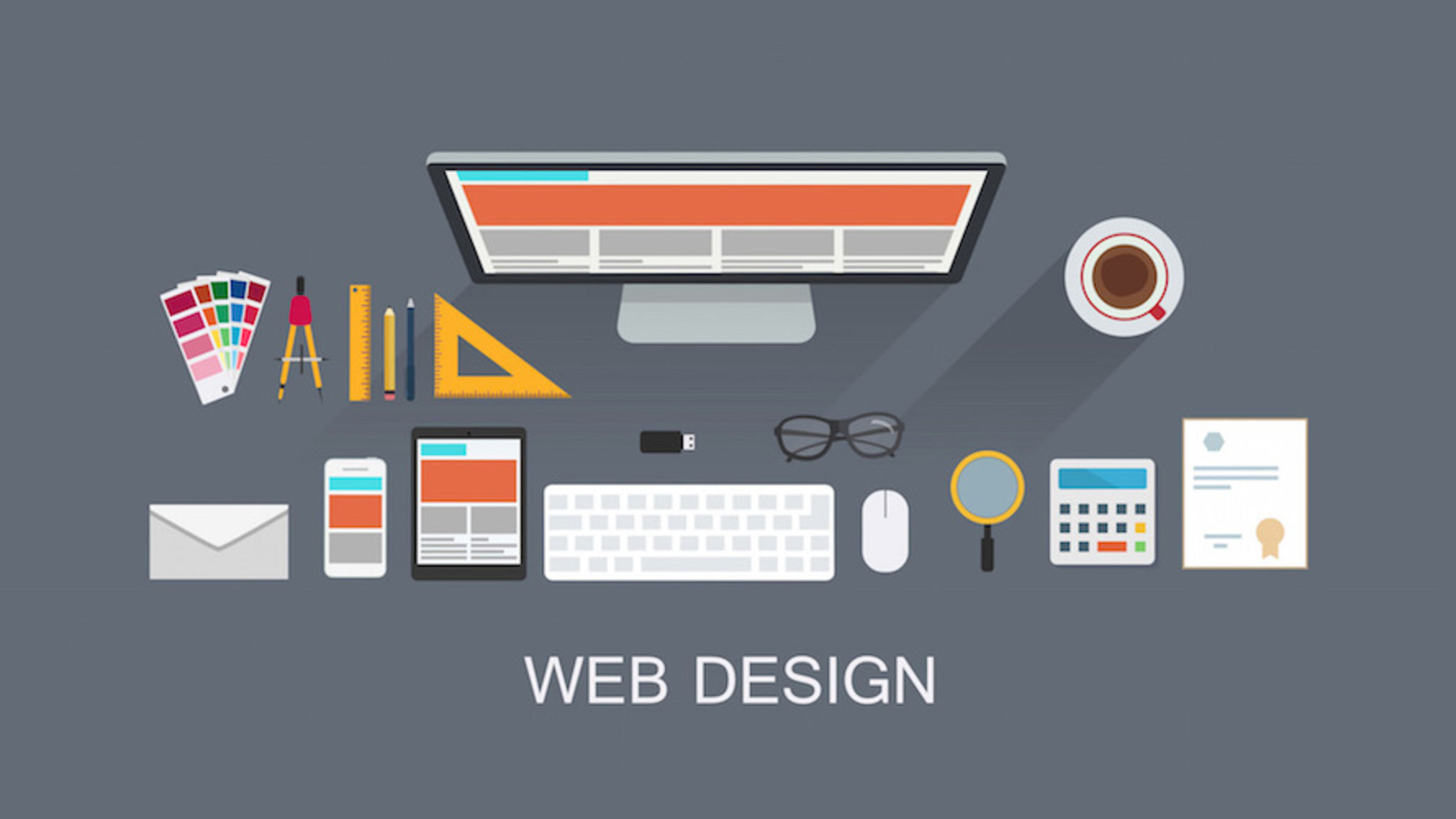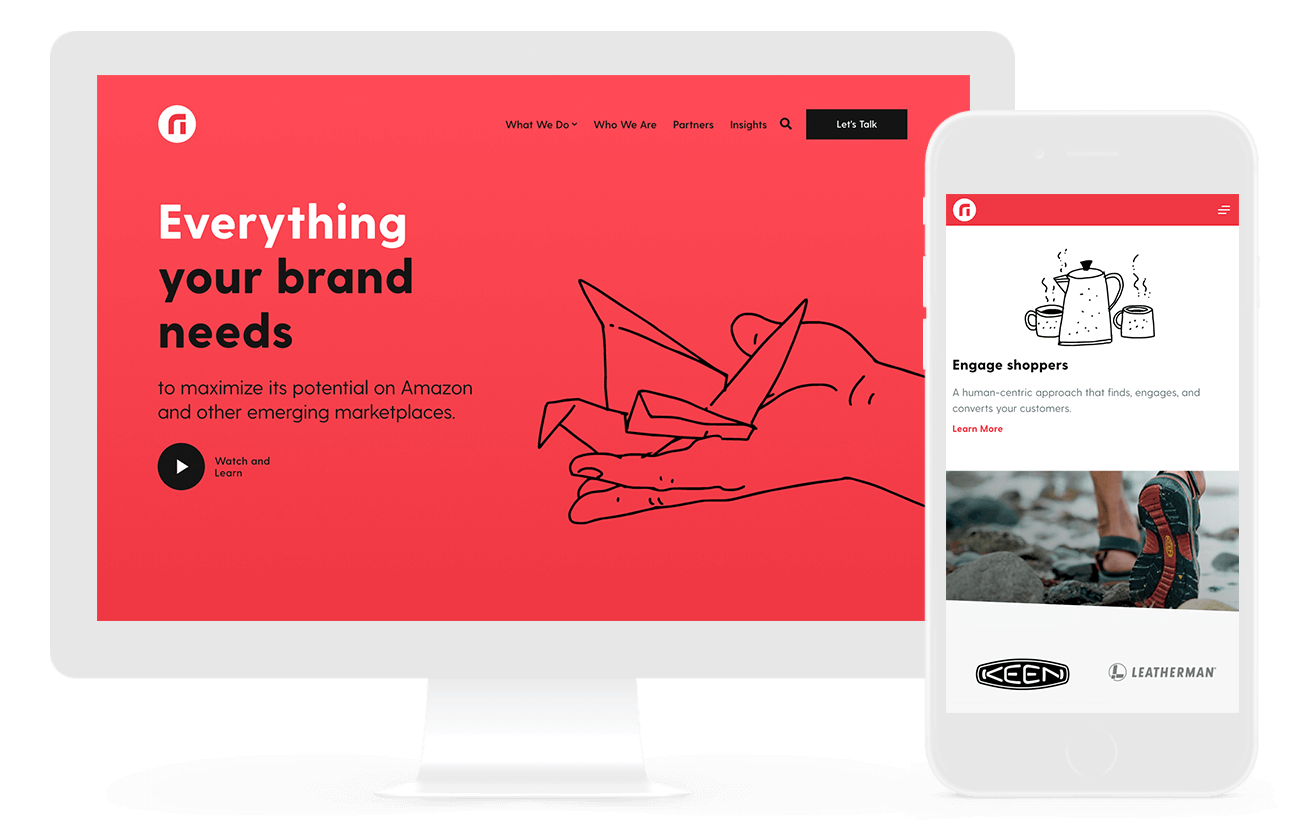All Categories
Featured
Table of Contents
- – Web Design Services + Website Development Agen...
- – Webpage Design (Article) - Further Learning -...
- – 10 Good Deeds In Web Design - Nielsen Norman ...
- – 12 Essential Tips For Improving Your Web Desi...
- – Boxcar Studio - Wordpress & Drupal Web Design...
- – What Does A Web Designer Do? - Careerexplorer...
- – Web Design Projects - Behance Tips and Tricks:
- – Awwwards - Website Awards - Best Web Design ...
- – Why Is Web Design Important? - 6 Reasons To ...
- – Basics Of Web Development & Coding Specializ...
- – Sustainable Web Design: Home Tips and Tricks:
Web Design Services + Website Development Agency Tips and Tricks:
Quick summary Functionality and the utility, not the visual design, identify the success or failure of a website. Since the visitor of the page is the only person who clicks the mouse and therefore chooses whatever, user-centric style has established as a standard method for successful and profit-oriented web design - web design frederick md.
and the energy, not the visual style, determine the success or failure of a site. Considering that the visitor of the page is the only individual who clicks the mouse and for that reason decides everything, user-centric style has become a standard approach for effective and profit-oriented web style. If users can't use a feature, it might as well not exist.
g. where the search box need to be positioned) as it has actually already been carried out in a variety of articles; rather we focus on the approaches which, used properly, can cause more sophisticated design decisions and streamline the process of viewing provided info. Please see that you might be thinking about the usability-related posts we have actually published before: Concepts Of Great Website Design And Reliable Web Design Standards, In order to use the principles appropriately we initially require to understand how users engage with websites, how they think and what are the basic patterns of users' behavior.
Webpage Design (Article) - Further Learning - Khan Academy Tips and Tricks:
Visitors look at each brand-new page, scan a few of the text, and click on the first link that captures their interest or vaguely resembles the important things they're searching for. There are big parts of the page they do not even look at. Many users search for something intriguing (or beneficial) and clickable; as quickly as some promising prospects are found, users click.
If a page supplies users with high-quality content, they are willing to jeopardize the material with advertisements and the design of the website. This is the reason why not-that-well-designed sites with premium content gain a lot of traffic over years. Content is more crucial than the style which supports it.

Users don't check out, they scan. Notice how "hot" locations abrupt in the middle of sentences. This is normal for the scanning process. Extremely basic principle: If a website isn't able to fulfill users' expectations, then designer failed to get his job done appropriately and the business loses money. The higher is the cognitive load and the less user-friendly is the navigation, the more willing are users to leave the site and search for alternatives.
10 Good Deeds In Web Design - Nielsen Norman Group Tips and Tricks:
Neither do they scan web page in a linear style, going sequentially from one site section to another one. Instead users satisfice; they select the first sensible alternative. As quickly as they discover a link that looks like it may lead to the goal, there is a really great chance that it will be instantly clicked.
It doesn't matter to us if we understand how things work, as long as we can use them. If your audience is going to imitate you're developing signboard, then design great billboards." Users wish to have the ability to control their internet browser and count on the constant information discussion throughout the website.
If the navigation and site architecture aren't intuitive, the variety of question marks grows and makes it harder for users to understand how the system works and how to obtain from point A to point B. A clear structure, moderate visual hints and quickly recognizable links can assist users to find their path to their objective.
12 Essential Tips For Improving Your Web Design In 2022 Tips and Tricks:

claims to be "beyond channels, beyond products, beyond distribution". What does it mean? Because users tend to explore websites according to the "F"-pattern, these three statements would be the first aspects users will see on the page once it is loaded. The style itself is easy and instinctive, to comprehend what the page is about the user needs to search for the answer.
As soon as you've accomplished this, you can communicate why the system is helpful and how users can benefit from it. Don't Misuse Users' Persistence, In every project when you are going to provide your visitors some service or tool, try to keep your user requirements minimal.
Novice visitors are willing to, not filling long web forms for an account they may never utilize in the future. Let users explore the website and discover your services without requiring them into sharing private information. It's not reasonable to require users to go into an e-mail address to test the feature.
Boxcar Studio - Wordpress & Drupal Web Design ... - Ann Arbor Tips and Tricks:
And that's what you want your users to feel on your web site. The registration can be done in less than 30 seconds as the kind has horizontal orientation, the user does not even require to scroll the page.
A user registration alone is sufficient of an impediment to user navigation to minimize inbound traffic. 3. Handle To Focus Users' Attention, As sites offer both fixed and dynamic content, some elements of the interface draw in attention more than others do. Certainly, images are more distinctive than the text simply as the sentences marked as vibrant are more appealing than plain text.
Focusing users' attention to specific areas of the site with a moderate usage of visual elements can help your visitors to receive from point A to point B without thinking of how it really is expected to be done. The less enigma visitors have, the they have and the more trust they can establish towards the business the website represents.
What Does A Web Designer Do? - Careerexplorer Tips and Tricks:
Strive For Feature Exposure, Modern web designs are generally criticized due to their approach of directing users with visually appealing 1-2-3-done-steps, big buttons with visual impacts etc. From the style point of view these aspects in fact aren't a bad thing.
The site has 9 main navigation options which show up at the first glimpse. The choice of colors might be too light, though. is an essential concept of successful user interface design. It doesn't truly matter how this is achieved. What matters is that the material is well-understood and visitors feel comfortable with the method they communicate with the system.
com gets directly to the point. No cute words, no overemphasized declarations. Rather a rate: just what visitors are searching for. An ideal service for reliable writing is touse short and succinct expressions (come to the point as rapidly as possible), use scannable design (classify the material, use numerous heading levels, utilize visual components and bulleted lists which break the circulation of uniform text blocks), use plain and unbiased language (a promo does not need to seem like ad; offer your users some sensible and objective factor why they should utilize your service or remain on your site)6.
Web Design Projects - Behance Tips and Tricks:
Users are hardly ever on a website to enjoy the style; in addition, most of the times they are searching for the details despite the design - web design frederick md. Pursue simplicity instead of intricacy. From the visitors' point of view, the finest website style is a pure text, without any ads or further material blocks matching exactly the question visitors used or the material they have actually been searching for.
Finch plainly presents the details about the site and gives visitors an option of options without overcrowding them with unneeded material. 7. Don't Hesitate Of The White Area, Actually it's really tough to overstate the importance of white space. Not just does it assist to for the visitors, however it makes it possible to view the details provided on the screen.
Complex structures are harder to check out, scan, analyze and deal with. If you have the choice between separating two style sections by a noticeable line or by some whitespace, it's normally much better to use the whitespace solution. (Simon's Law): the much better you manage to supply users with a sense of visual hierarchy, the simpler your content will be to view.
Awwwards - Website Awards - Best Web Design Trends Tips and Tricks:
The very same conventions and rules need to be applied to all elements.: do the most with the least amount of cues and visual components. 4 significant points to be considered: simplicity, clarity, distinctiveness, and focus. Simplicity includes just the aspects that are most crucial for interaction. Clearness: all parts should be created so their significance is not uncertain.
Conventions Are Our Buddies, Conventional design of site components does not result in a boring web site. It would be an usability problem if all websites had different visual discussion of RSS-feeds.
understand what they're anticipating from a site navigation, text structure, search positioning etc. A case in point from use sessions is to translate the page in Japanese (presuming your web users don't know Japanese, e. g. with Babelfish) and provide your usability testers with a job to find something in the page of various language.
Why Is Web Design Important? - 6 Reasons To Invest In Site ... Tips and Tricks:
Test Early, Test Frequently, This so-called TETO-principle must be applied to every web style job as functionality tests typically provide into substantial issues and concerns related to a provided design. Test not too late, not too little and not for the wrong factors.
Some essential points to bear in mind: according to Steve Krug, and screening one user early in the job is much better than screening 50 near the end. Accoring to Boehm's very first law, mistakes are most frequent during requirements and design activities and are the more costly the later they are eliminated.
That indicates that you create something, test it, repair it and then check it once again. There might be problems which have not been discovered throughout the first round as users were practically obstructed by other issues. functionality tests. Either you'll be pointed to the issues you have or you'll be pointed to the lack of significant design defects which remains in both cases an useful insight for your project.
Basics Of Web Development & Coding Specialization - Coursera Tips and Tricks:

This holds for designers. After you've worked on a website for few weeks, you can't observe it from a fresh perspective any longer. You know how it is constructed and for that reason you understand exactly how it works you have the knowledge independent testers and visitors of your site wouldn't have.
It can be linked to other areas such as graphic style, user experience, and multimedia arts, but is more appropriately seen from a technological standpoint. It has actually become a big part of individuals's daily lives. It is tough to think of the Internet without animated graphics, different designs of typography, background, videos and music.

Throughout 1991 to 1993 the World Wide Web was born. Text-only pages could be seen using a simple line-mode web browser. There had been no integrated method to graphic style elements such as images or sounds.
Sustainable Web Design: Home Tips and Tricks:
The W3C was produced in October 1994 to "lead the Internet to its full capacity by developing typical procedures that promote its development and guarantee its interoperability." This prevented any one company from monopolizing a propriety web browser and shows language, which could have changed the impact of the Web as a whole.
As this has happened the innovation of the web has actually also moved on. There have actually likewise been substantial changes in the method people use and access the web, and this has actually changed how sites are created. Since completion of the web browsers wars [] brand-new internet browsers have actually been released. A number of these are open source implying that they tend to have much faster development and are more encouraging of brand-new standards.
Learn more about Lovell Media Group LLC or TrainACETable of Contents
- – Web Design Services + Website Development Agen...
- – Webpage Design (Article) - Further Learning -...
- – 10 Good Deeds In Web Design - Nielsen Norman ...
- – 12 Essential Tips For Improving Your Web Desi...
- – Boxcar Studio - Wordpress & Drupal Web Design...
- – What Does A Web Designer Do? - Careerexplorer...
- – Web Design Projects - Behance Tips and Tricks:
- – Awwwards - Website Awards - Best Web Design ...
- – Why Is Web Design Important? - 6 Reasons To ...
- – Basics Of Web Development & Coding Specializ...
- – Sustainable Web Design: Home Tips and Tricks:
Latest Posts
Web Design And Engineering Major - Santa Clara University Tips and Tricks:
Web Design And Applications - W3c Tips and Tricks:
Basics Of Web Development & Coding Specialization - Coursera Tips and Tricks:
More
Latest Posts
Web Design And Engineering Major - Santa Clara University Tips and Tricks:
Web Design And Applications - W3c Tips and Tricks:
Basics Of Web Development & Coding Specialization - Coursera Tips and Tricks: